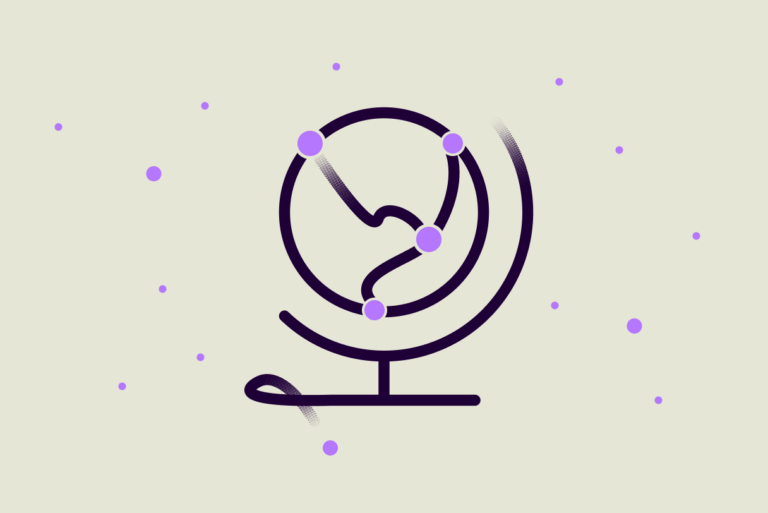Mastering skills management: Procter & Gamble’s data-driven approach
Effectively managing skills demands a delicate balance, and P&G has undertaken this challenge with a strategic, data-driven approach with the help of the Valamis platform.

Effectively managing skills within an organization demands a delicate balance, and Procter & Gamble (P&G) has undertaken this challenge with a strategic, data-driven approach with the help of the Valamis platform.
The journey towards refining skills management at P&G, highlighted by the collaboration between Dawn Viera, Senior Learning Solution Partner at Valamis, and Francesco Mantovani, P&G’s Global Learning Technologies and Innovation Leader, offers a rich narrative of innovation and strategic implementation.
During our recent webinar, they shared their experiences and strategies in leveraging data and artificial intelligence (AI) to improve skills management at P&G.
Embracing the challenges of skills management
At P&G, the quest for effective skills management is seen as an integral part to the company’s overarching goals. However, the organization faced challenges in engagement within its L&D programs.
A survey conducted by Mantovani at the beginning of his L&D strategy development showed P&G employees had three main challenges with learning:
- When should I make time to learn?
- What should I focus on learning?
- Where can I find the right materials?
Mantovani (or Manto as he is known) highlighted the necessity of aligning a skills management strategy with business objectives to foster a sustainable learning culture with these findings.
In order to build a sustainable learning culture and impact the business, business side and the people side of L&D need to be in sync. This alignment hinges on the integration of high-quality data and a willingness to experiment, ensuring both the business and its employees grow hand in hand.
Moving from multiple platforms to a single learning platform
Ensuring business alignment in learning requires data, and data requires modern technology and a forward-thinking LMS. Therefore, Manto knew he needed to next focus on transitioning from multiple platforms to a unified learning platform at P&G, which was a complex undertaking.
Recognizing the challenge of scattered data, P&G adopted a learner-centric approach using Design Thinking.
With the learners’ 3 W’s in mind, this led to the development of a feature-rich learning platform that aimed at bridging the learner’s skill gap, focusing on improving confidence in applied skills rather than merely enhancing abilities.
Manto learned there are three critical benefits for learners and the business with a single learning platform:
- There will be comprehensive data in one source,
- It is more efficient to maintain learner engagement,
- Learners can trust that the content they need to learn will be easy to find.
Leveraging technology and data for strategic alignment
P&G’s transition to a unified learning platform was a strategic move to overcome the pitfalls of scattered data. By adopting a learner-centric approach grounded in design thinking, the company aimed to close the skill gap with a platform that not only enhances skills but boosts confidence in their application.
The introduction of AI into P&G’s L&D strategy marked a great leap forward, with tools like the AI assistant CoursePT by Valamis enabling personalized learning paths and interactive experiences.
This use of AI underscores P&G’s commitment to not just informing but engaging its workforce in their development.
Manto elaborated on the transformative power of AI, stating, “People wanted a mentor knowing everything about them to be able to tell them what skills to focus on to reach their personal goals. But they didn’t want this coach to be a human because they didn’t want to feel judged for their skills gaps.”
Making your learners part of the journey
Learners are the core of every L&D initiative, so actively involving them in the process was a no-brainer for Manto. By aligning individual aspirations with organizational goals, P&G created a learning environment that supports both personal and professional growth.
This approach not only catered to the learners’ preferences but also addressed broader company challenges, leading to more focused and effective learning pathways.

Manto outlined the 7 steps to improving the employee learning process for a skills focused L&D strategy:
- Ask employees what they want to achieve,
- Define what the organization wants to achieve,
- Find the connection between business objectives and employee development,
- Provide learning content through that checks both boxes,
- Implement a process to apply new skills learned on-the-job,
- Measure the business impact of learning,
- Reward successful learning with badges and certificates.
This innovative approach of surveying learners unveiled crucial insights, prompting a shift from catering solely to user preferences to solving broader company challenges. The emphasis shifted towards bridging the learner’s “skill gap,” resulting in the creation of guided learning paths that enabled users to track progress effectively.
“To improve peoples’ performance, it’s not necessary to improve their skills. You need to improve their confidence. Learning alone won’t do that. When you apply your skills and it works, your confidence grows a little bit,” Francesco Mantovani, P&G’s Global Learning Technologies and Innovation Leader
Insights from P&G’s data-driven approach to skills management
P&G’s journey towards a data-driven skills management system is a testament to the power of continuous learning and adaptation.
The company’s ability to learn from both successes and setbacks reveals the dynamic nature of effective skill management in today’s tech-driven world. AI and data analytics play pivotal roles in personalizing the learning experience and identifying skill gaps, offering insights that help both individuals and the organization as a whole.
Conclusion: The future of skills management at P&G
Under Manto’s guidance, with over two and a half decades of experience at P&G, the company has recognized the essential integration of human resources and technology in elevating skills management. This shift towards a data-driven approach emphasizes the importance of aligning with strategic goals over simply catering to user preferences.
As P&G continues to evolve its L&D strategies, its journey offers valuable lessons for organizations worldwide striving for excellence in skills management.
“Being a skills-based organization is something complex to make and it is a journey – make discoveries through the failure of experiments,” Francesco Mantovani, P&G’s Global Learning Technologies and Innovation Leader
Make every skill count
Valamis Skills Management evaluates skill levels to pinpoint gaps and create bespoke upskilling and reskilling programs. Help your team reach their full potential.
Learn more about skills management



